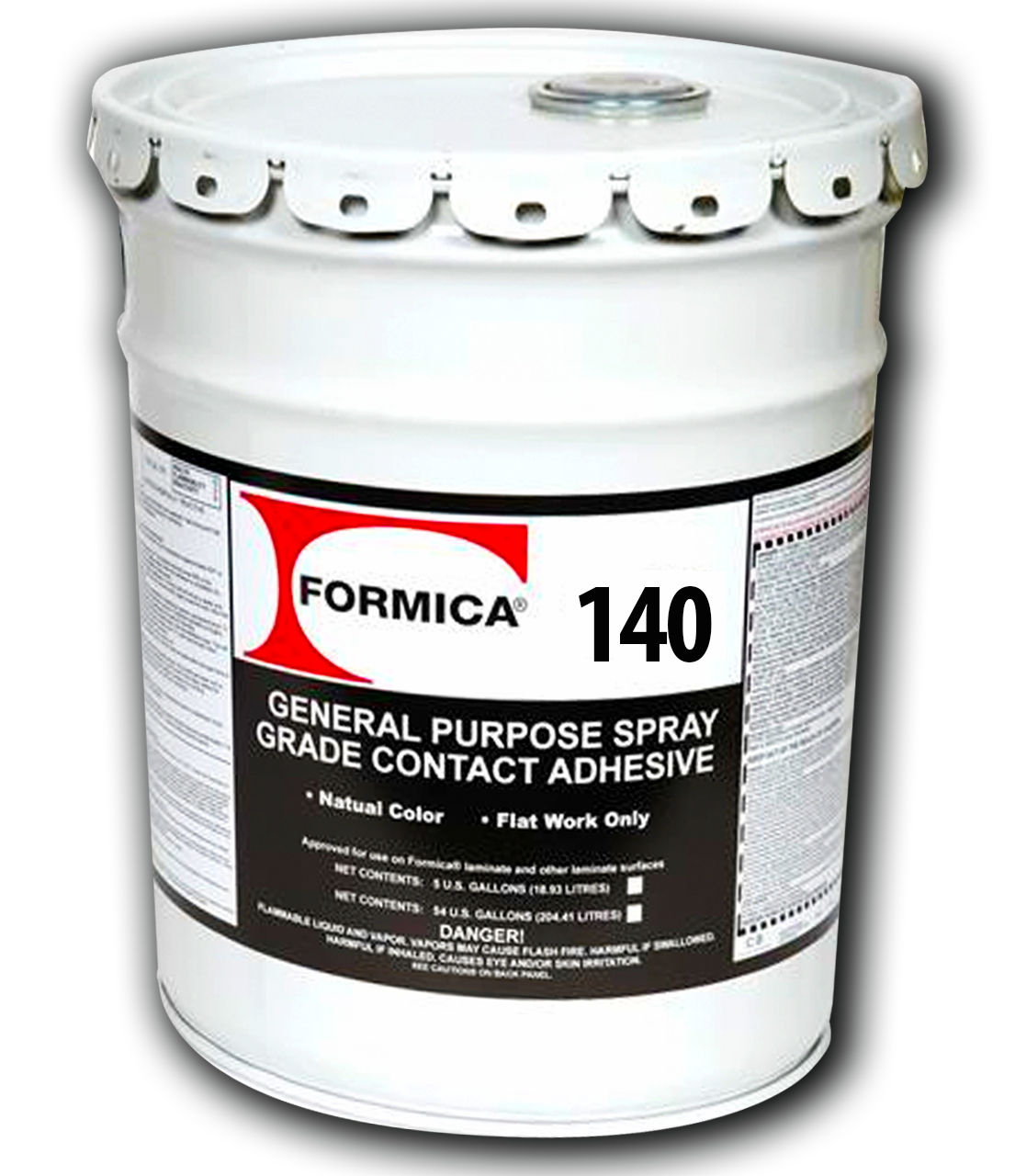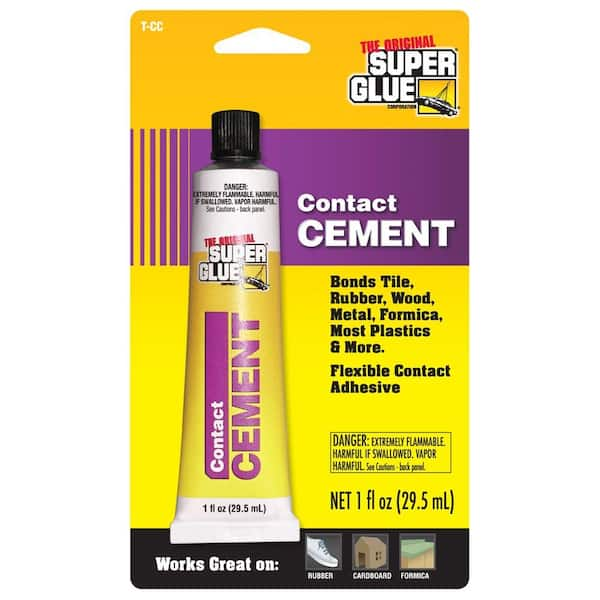Contact adhesive works by creating a strong bond when the solvent evaporates, allowing surfaces to stick together permanently. This type of adhesive is applied to both surfaces being bonded and then pressed together, creating an instant and durable bond.
Contact adhesives are commonly used in various applications such as laminates, woodworking, and automotive repairs due to their fast bonding capabilities and high strength. They are versatile and suitable for bonding different materials like wood, metal, plastic, and fabric. Understanding how contact adhesive works can help ensure successful and long-lasting bonding for your projects.

The Science Of Stickiness
When it comes to understanding how contact adhesive works, it’s important to delve into the science of stickiness and the fundamentals of adhesives. Contact adhesives are known for their strong bonding capabilities, making them popular in various applications.
Contact adhesives are composed of a combination of chemicals that work together to create a strong bond. These chemicals typically include polymers, solvents, and additives. The polymers provide the adhesive properties, allowing it to stick to surfaces, while solvents help with the application and drying process. Additives are often included to enhance specific characteristics, such as flexibility or heat resistance.
When contact adhesive is applied, the solvents evaporate, causing the polymers to harden and form a strong bond between the surfaces. This type of adhesive is known for its instant grip and high strength, making it suitable for bonding a wide range of materials, including wood, metal, plastics, and more.
Understanding the chemical composition of contact adhesives can help users select the right adhesive for their specific needs, ensuring a strong and durable bond.
Types Of Contact Adhesives
Contact adhesive is a type of glue that creates a strong bond when two surfaces are brought into contact. Water-based contact adhesives are environmentally friendly and have low odor. They are suitable for bonding porous materials like wood and fabric. Solvent-based contact adhesives are known for their quick drying time and strong initial bond. They are often used for bonding non-porous materials such as plastic and metal. Both types of contact adhesives require pressure to form a strong bond. The adhesive is applied to both surfaces, left to dry, and then the surfaces are pressed together to create a lasting bond.
Application Techniques
Proper surface preparation is essential for the effective application of contact adhesive. Before applying the adhesive, make sure the surfaces are clean, dry, and free from dust, grease, and other contaminants. Remove any loose particles or old adhesive residue.
When applying the adhesive, it is important to achieve even coats on both surfaces to ensure a strong bond. Use a brush or a roller to apply the adhesive, spreading it evenly across the surfaces. Avoid applying too much adhesive, as it can lead to excessive drying time or uneven bonding.
Allow the adhesive to dry for the recommended time, which can vary depending on the type and brand of adhesive used. Once the adhesive is dry to the touch, carefully align and press the surfaces together, applying firm and even pressure to ensure a secure bond.

Bonding Process
Contact adhesive works through a simple bonding process. When the adhesive is applied to two surfaces, pressure is then used to bring the surfaces into contact. This activates the adhesive, creating an instant bond. The curing time for the adhesive varies based on the specific product and environmental conditions. It is important to allow sufficient time for the adhesive to fully cure and create a strong bond.
Advantages Of Contact Adhesives
Contact adhesive is a type of glue that creates an immediate bond when two surfaces are brought into contact. Its unique formula allows for versatility across materials, making it suitable for a wide range of applications. One of the main advantages of contact adhesives is their ability to provide strong and durable bonds without the need for clamping or sustained pressure. This makes them particularly useful for projects where traditional adhesives may not be practical. Additionally, contact adhesives are known for their resistance to heat and moisture, making them suitable for both indoor and outdoor use. Their ability to bond to a variety of surfaces, including wood, metal, and plastic, further enhances their appeal for DIY enthusiasts and professionals alike.

Common Uses And Projects
Contact adhesive works by creating a strong bond between surfaces upon contact. Common uses include bonding laminate, veneer, and rubber. It is ideal for projects like repairing furniture, installing countertops, or crafting DIY projects.
| Laminating Countertops | Shoe Repair and Leatherwork |
| Contact adhesive bonds laminate to countertop surface. | Use contact adhesive for fixing shoe soles and repairing leather. |
| Ensures durable and long-lasting adhesion for countertops. | Perfect for affixing leather pieces securely in place. |
| Creates a strong and seamless bond between materials. | Provides a reliable hold for various shoe repair tasks. |
Safety Considerations
Contact adhesive works by creating a strong bond when two surfaces come into contact. Safety considerations when using contact adhesive include ensuring good ventilation, avoiding skin contact, and keeping the adhesive away from open flames to prevent potential hazards. It’s important to follow the manufacturer’s instructions for safe and effective use.
| Safety Considerations |
| Ensure proper ventilation in the workspace to avoid inhaling harmful fumes. |
| Wear Personal Protective Equipment like gloves and a mask for added safety. |
Troubleshooting Common Issues
Contact adhesive works by creating a strong bond between two surfaces through the application of pressure. If you encounter issues with contact adhesive, such as poor adhesion or uneven application, troubleshoot by ensuring both surfaces are clean and dry before application.
Additionally, use even pressure during the bonding process to achieve optimal results.
| One reason for weak bonds is improper surface preparation. | Ensure surfaces are clean, dry, and free of debris. |
| Uneven adhesion can result from applying too much or too little adhesive. | Follow the manufacturer’s guidelines for proper application. |
Frequently Asked Questions
How Does Contact Adhesive Work?
Contact adhesive works by creating a strong, permanent bond between two surfaces. It is applied to both surfaces and allowed to dry before being pressed together. The adhesive contains solvents that evaporate, leaving behind a sticky residue that bonds the two surfaces together.
What Surfaces Can Contact Adhesive Be Used On?
Contact adhesive can be used on a variety of surfaces, including wood, metal, plastic, leather, and fabric. It is ideal for bonding large surfaces, such as countertops or flooring, as well as smaller items like shoes or furniture.
Is Contact Adhesive Waterproof?
Most contact adhesives are waterproof once they have fully cured. However, it is important to check the label of the specific adhesive being used to ensure that it is suitable for the intended application and environment.
How Long Does Contact Adhesive Take To Dry?
Contact adhesive typically takes 15-30 minutes to dry, but this can vary depending on the temperature and humidity of the environment. It is important to follow the manufacturer’s instructions for drying time and application.
Conclusion
Overall, contact adhesive is a popular and effective solution for bonding various materials together. Its unique composition allows it to create a strong and permanent bond when applied correctly. By following the proper application techniques and using the appropriate type of adhesive for the specific materials being bonded, users can achieve reliable and long-lasting results.
With its versatility and ease of use, contact adhesive is a reliable tool for various DIY projects and professional applications alike.

